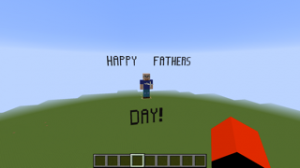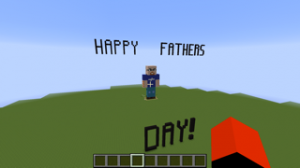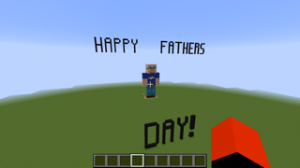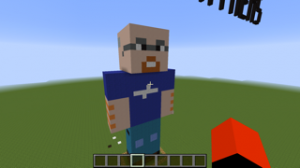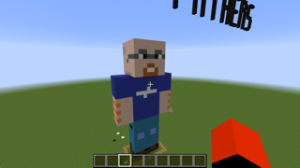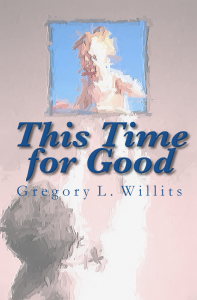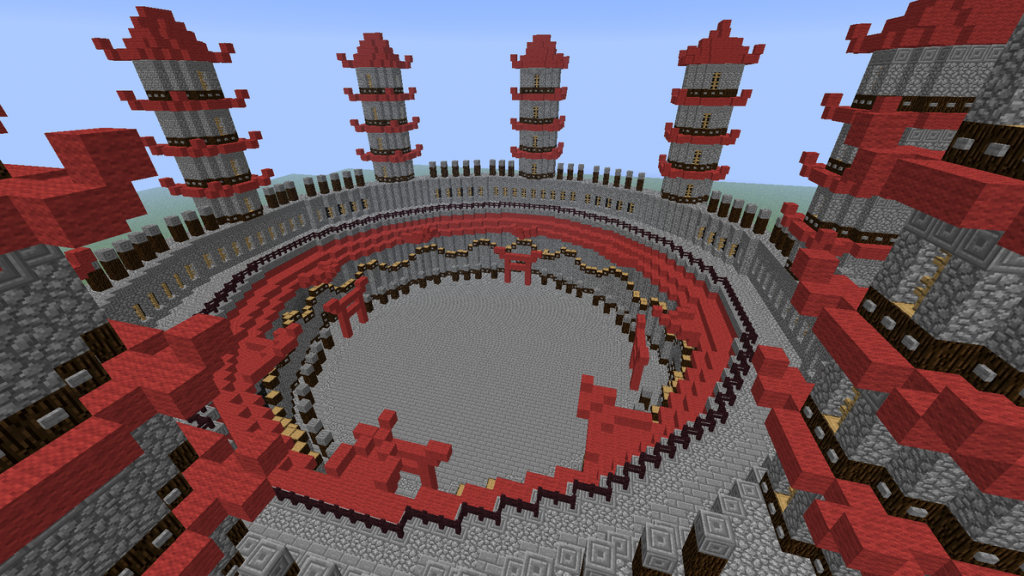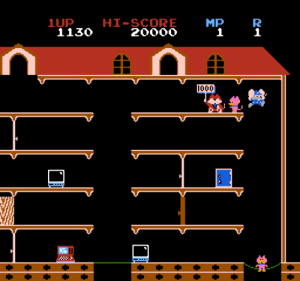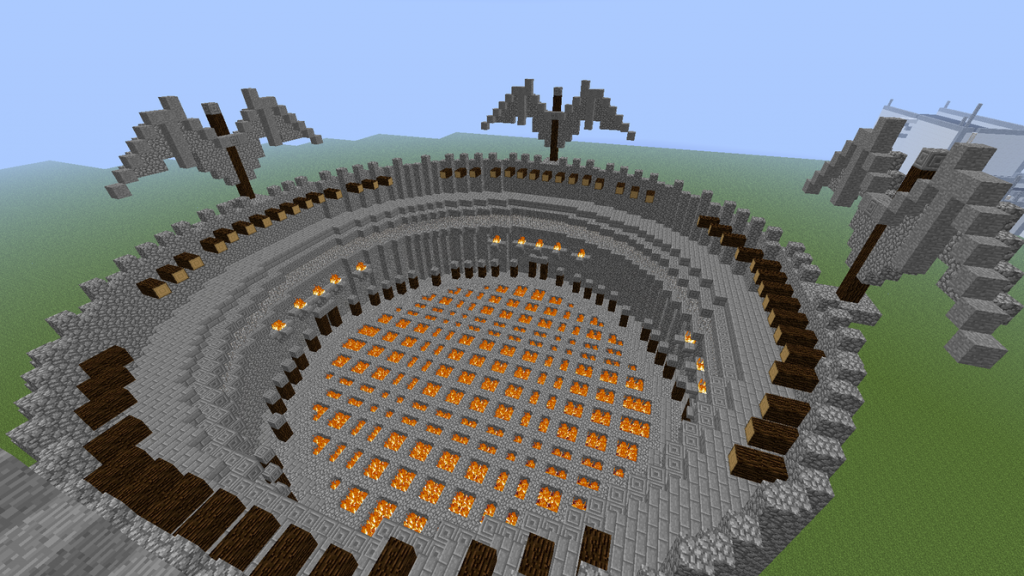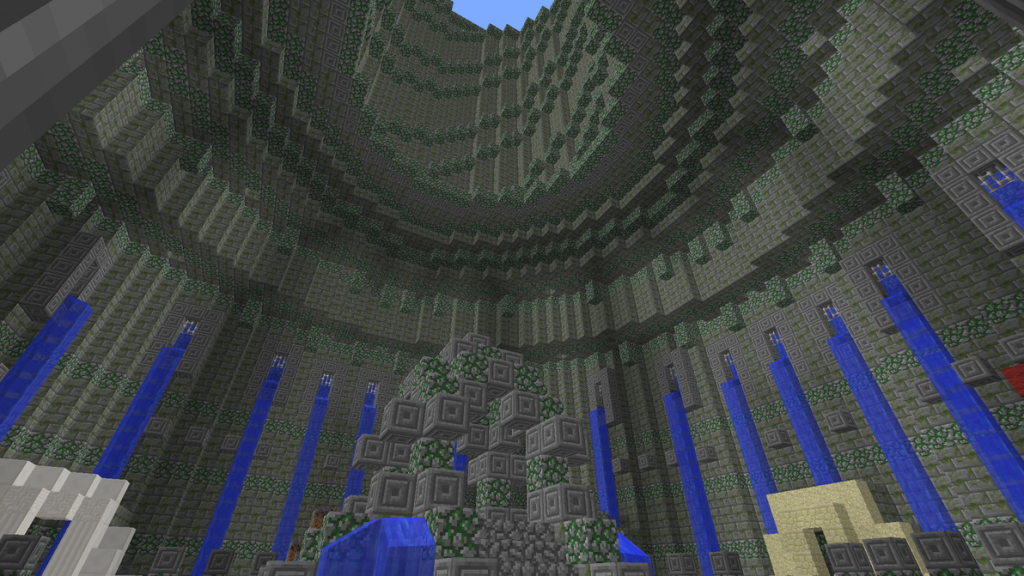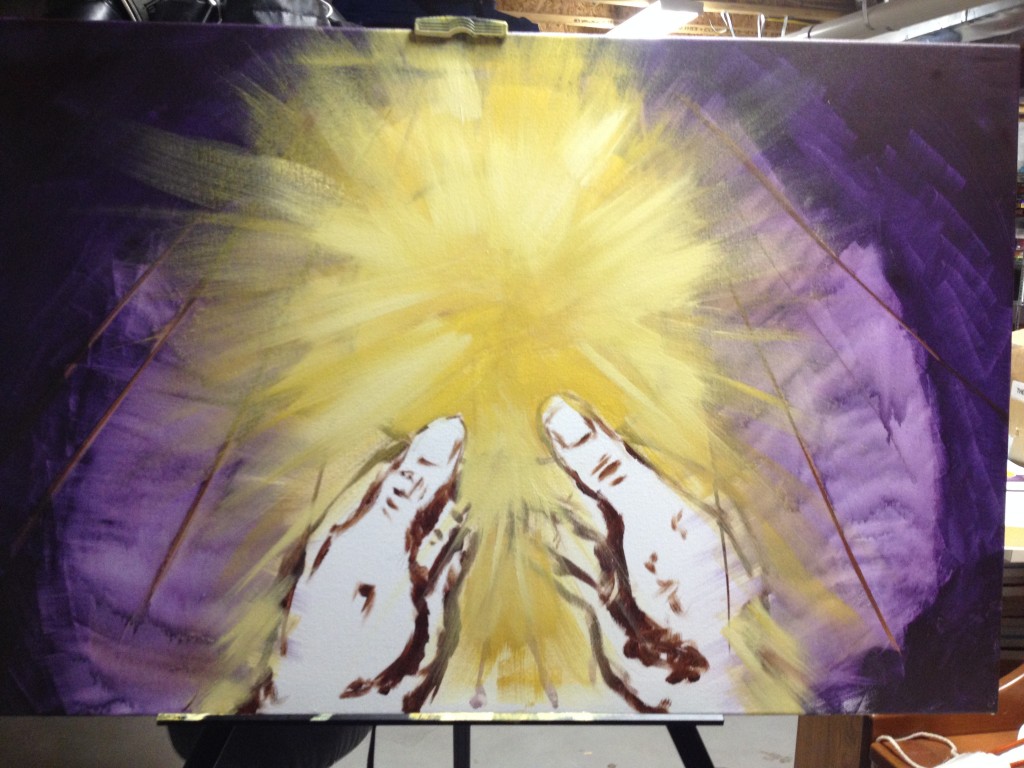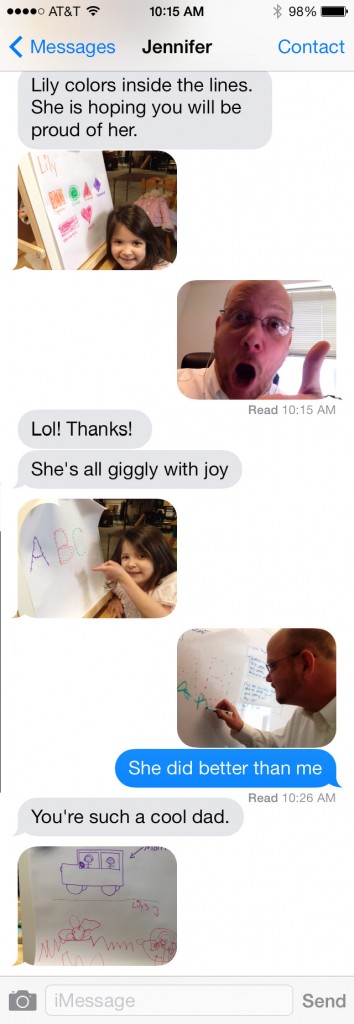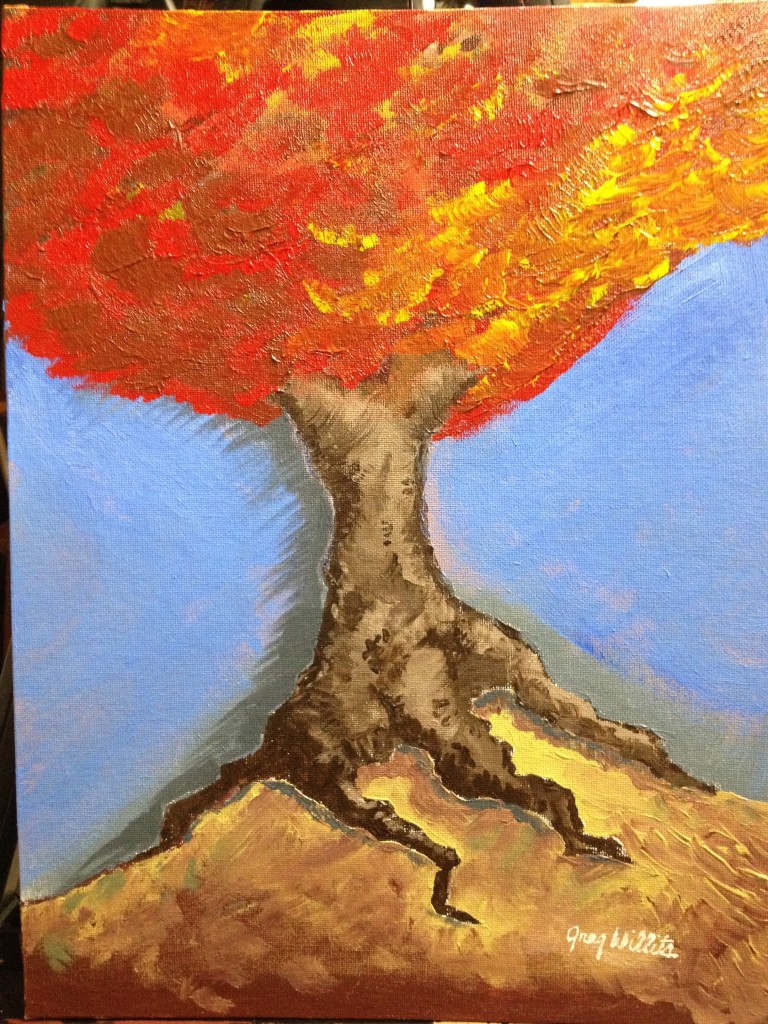10 Years of Silence
In light of my recent post about getting back into writing after monumental failure, I greatly appreciated this post about successful artists and others who put in long hours (and years) of time before actually creating anything long lasting and great.
Also, if you liked my post about artistic endeavors, be sure to also check out Angela Sealana’s beautiful post on the same topic.
Defining the New Evangelization is Like Herding Squirrels
We were having dinner with several other Catholics when my wife Jennifer posed the question, “What’s the first thing you think when you hear the phrase new evangelization?”
Around the table, everyone nodded in agreement with the hypothesis that, even though the phrase is frequently used in the Catholic Church—and despite the fact that Pope Benedict XVI declared a Year of Faith with a focus on the New Evangelization between October 2012 and November 2013—many people don’t have a clue as to what “new evangelization” is, what their role in it is, or how to make it a part of their daily lives.
Sadly, this seems to be the case even after three decades of discussion on the topic.
During his historic 1979 visit to Poland, Bl. John Paul II first coined the phrase when he proclaimed, “A new evangelization has begun, as if it were a new proclamation, even if in reality it is the same as ever.”
What’s the first thing you think of when you hear the phrase “new evangelization”?
Defining new evangelization is like herding squirrels
There are many different ideas of what the new evangelization is and isn’t. You might think it has something to do with improving religious education, or perhaps it has to do with new media, podcasts, blogs, and social networks. Or maybe you simply think the new evangelization is about a whole new way of sharing the Faith.
The fact of the matter is that the new evangelization includes each of these approaches, and many more. With so many possibilities, coming up with a concise definition for such an important topic might cause additional trepidation for someone who is already apprehensive about any form of evangelization, new or old.
Simply put, the new evangelization is all about Jesus Christ and living out the faith that draws us closer to him. It’s about your relationship with Christ, as well as helping others to continually develop a relationship with him, too. But it’s also about the many approaches available to do so, and the fervor with which we embrace this challenge in today’s secular and relativistic culture.
That’s why I say that defining the new evangelization is like herding squirrels: It can take you in a multitude of different directions, sometimes all at once.
Second chances
It’s difficult to find someone in today’s world who has not at least heard of Jesus Christ.
That’s because the initial, first, and primary evangelization that started with the apostles has accomplished what Jesus instructed them to do, which was to be witnesses to the ends of the earth (Acts 1:8).
The new evangelization can be considered a secondary follow-up to the first evangelization that introduced the world to the salvific message of Jesus Christ. It is meant not only for those without any relationship with Christ, but also for those who have been introduced to Jesus, but who, for one reason or another, have not developed or maintained a relationship with him.
As Bl. John Paul II wrote in Redemptoris Missio, the new evangelization is, in part, for “Catholics [who have] lost a living sense of faith, or even no longer consider themselves members of the Church.”
Likewise, the new evangelization is an ongoing effort that applies to you, me, your priest, the pope—everyone who currently doeshave a relationship with Christ.
Three-step approach
An easy way to think about the new evangelization is to break it down into three parts: know the Faith, live the Faith, and share the Faith.
For the new evangelization to work, it is necessary for each of us as Catholics to engage in all three areas and do so on a constant, unending basis. The new evangelization is a challenge to continually grow in our relationship with Jesus and to help others do the same.
This starts with knowing our Faith.
When giving talks to groups, I regularly remind people that from the moment we are conceived, we are 2,000 years behind the curve when it comes to learning about the history, traditions, and sacramental life of the Catholic Church. We’ve got a lot of catching up to do!
We can (and should) spend our entire lives on an unending quest of knowing as much about our Faith as possible. Our hunger for the truth should drive us to question our misunderstandings and incomplete knowledge and seek out answers that the Church readily provides.
And if you’re like me, growing up in the 1970s and 80s, perhaps the catechesis you did receive did not provide a truly firm foundational understanding of the core tenets of Catholicism—such as the Church’s teaching on the Real Presence of Jesus Christ in the Eucharist, for example.
But if we stop at just knowing the Faith without living it out, then we’re just talking the talk and not walking the walk. I know many people who can quote the Bible, chapter and verse, but do a miserable job actually acting in the way that Christ commands. Therefore, the second aspect of the new evangelization is living the Faith through regular reception of the sacraments (especially the Eucharist and reconciliation), as well as striving to be Christ to others in this world. It is finding ways each day to actually implement the teachings of the Faith through our thoughts, words, and actions.
Lastly, if we just know and live out our faith without sharing it with others, we are not living out our faith with the zeal of the first apostles. To truly be new evangelizers, it is not enough to just focus on one of these areas. It is absolutely mandatory that we strive to grow in all three.
- Know the Faith.
- Live the Faith.
- Share the Faith.
Future thinking
Knowing that the new evangelization is something that applies to each and every Christian, how will you make it a part of your life?
I suggest taking small, incremental, ongoing steps combined with a concrete game plan.
A week from now, what realistic steps will you have taken to better know your Faith?
A month from now, what are some tangible ways will you be more fully living out your Faith?
A year from now, what would it look like for you to more successfully share your Faith with others?
Writing down realistic goals and action steps ultimately has a snowball effect on how we know, live, and share our Faith. Though it may seem we’re only making minor improvements each day, week, month, and year, over time our incremental efforts build upon each other, making our Faith more exciting, engaging, and life-altering.
What’s your game plan? Given how basic the new evangelization truly is, what steps will you take to become a new evangelizer?
10 Ways to Know the Faith
- Pick one short book from the Bible (like James or Mark) and read it all the way through.
- Learn more about the Eucharist by reading, studying, and praying over John 6 (especially the Bread of Life discourse).
- Learn to use the Index of Citations in the back of the Catechism to learn what the Catholic Church teaches about individual passages of Scripture.
- Read Humanae Vitae by Pope Paul VI.
- Watch episodes of That Catholic Show at NewEvangelizers.com.
- Visit USCCB.org and read the bishops’ document, Disciples Called to Witness.
- Ask the Holy Spirit for wisdom.
- Read the Catechism’s explanation of the Nicene Creed to better understand the words we recite at Mass.
- Brush up on the Ten Commandments.
- Start bringing your Bible to Mass with you, and write notes in the margins during the homily.
10 Ways to Live the Faith
- Go to confession. Seriously.
- Clean out your closet and find at least five items to donate or give away.
- Go sit in front of the tabernacle and tell Jesus you love him.
- Increase your tithe at least 1 percent, if not more.
- When you drive by a Catholic Church, make the sign of the cross and say aloud, “I love you, Jesus!”
- Pray for others, especially people you don’t like.
- Rest on Sundays. Turn off electronics. Focus on God and family.
- Keep a crucifix next to your computer.
- Vote as a Catholic—not as a Republican, Democrat, Conservative, or Liberal.
- Anonymously give cash to someone in need.
10 ways to share the Faith
- Hang a holy card in your office at work or on your refrigerator.
- Start a blog and write about your faith journey.
- Invite someone to Adoration, especially your kids or spouse.
- Forgive someone who hurt you.
- Buy Catholic newspaper and magazine subscriptions (like Catholic Digest) for other people.
- Eat dinner as a family and always start with a prayer.
- Offer to teach a class or get involved in other ministries in your parish.
- Wear Catholic T-shirts in public.
- Use Twitter, Facebook, or other social media to share your favorite verse from Mass each week.
- Make sure every person in your family has a Bible and rosary and offer to help them learn how to use them.
*Like this list of ideas? For an entire year of ideas for knowing, living, and sharing your Faith, pick up a copy of The New Evangelization and You: Be Not Afraid.
This article originally appeared in Catholic Digest.
Upon Request…
After my post about a Dad’s Guide to Minecraft, several readers requested (both in the comments below and on Twitter and FB) that I post the 100-foot statue of me that my son Ben made for Father’s Day last year. He even attempted to create a version of me wearing a Rosary Army t-shirt. Here are a few screen shots.
Why I Gave Up on Artistic Endeavors and What’s Bringing Me Back
An Accidental Artist
Since childhood, my ultimate career ambition has always been to be a novelist, to craft long-form prose, to see it in hardcover with a removable jacket sleeve, and to somehow sustain myself and my family through the quest of creating memorable fiction. I was told at an early age by a teacher with whom I maintain contact to this very day that I had a talent, that in fact I had “no reason whatsoever not to be a writer,” and this initial encouragement was reiterated by others — teachers, friends, mentors — throughout many years.
I believed what I had been told.
Writing morphed into other creative interests, primarily drawing, but also poetry, music, and painting. Anything with an aesthetic nature flowed somewhat easily. In college I landed the lead in a university’s major production without ever having any acting experience (and managed to land a wife in real life in the process). Years later my wife and I were given full-time jobs in radio without ever having taken a class in broadcasting. Like these, in many of my creative pursuits I’ve stumbled into them rather than actually sought them out.
I have always understood the arts and had an appreciation for movies and novels, in particular. 1989’s Dead Poets Society spoke to my core and resonated on a level I’d infrequently experienced before. I identified in some way with each of the characters and for the next year I almost always had a notebook within arm’s reach to scribble out a stanza when inspiration struck.
Most of the creative endeavors I’ve encountered, I’ve enjoyed. And for the most part I have had a certain level of competency. Not expertise, mind you, but competency, and enough competency to make me think I had a shot of actually transforming one of these artistic pursuits into a genuine career.
But creative writing was the only endeavor that allowed me to relate to the phrase, “it feeds my soul.”
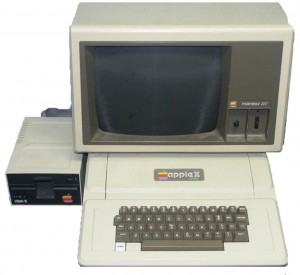
What my first computer looked like, right down to the green screen monitor with the weird film on the screen. Image from http://apple2history.org/
Somewhat surprisingly, my interest in the arts lead to a successful career in the IT industry. I always loved to write and I always liked playing video games. In the early 1980’s my father bought us an Apple II+ computer which, if I wanted to write and and play games, I had to learn to use. Even Applesoft BASIC (and later just regular BASIC) programming had a certain creative sensibility and flow to it. Because of this combination of technical and creative ability, when it became possible to create graphically enhanced websites in the mid-1990’s, I stumbled into an unexpected career that was nothing more than being in the right place at the right time. Anyone could now create a website, but in the early days of mass-acceptance of the Internet, and long before the pervasiveness of WordPress, making a website actually look good was akin to voodoo.
After several years, though, my technical pursuits involved less and less creativity as employers saw in me a proficiency for project management and leading teams. I had children to feed now, and a mortgage, and creative pursuits and the romantic notion of being a starving artist and modern day Bohemian felt selfish.
The Worst Possible Doubt
In 2000 I was several years into a career developing software systems both as a developer and a manager. Struck by inspiration, I’d leave work each night and stop at the local library to pound out 1000 words before heading home. The concept for the story was the fruit of frustration from the myriad of pop sensation novels that revolved around dysfunctional characters living out immoral solutions to their shallow lifestyles. In the midst of writing, as a result of multiple factors, my own relationship with God was deepening. I told myself and God that my novel was an antidote to a literary market filled with tales of dysfunction that was given free reign to destroy lives. As my own story was borne, I daydreamed of best-seller lists and bidding wars and advance checks with multiple zeros. I’d convinced myself that the publication of this novel would alter my life forever.
The end result was a novel called “This Time For Good” which was promptly rejected by over 150 agents and publishers. All the secular publishers said it was too religious, all the religious publishers said it was too Catholic, and the one Catholic fiction publisher at the time said they weren’t publishing any more fiction.
The rejections poured in over the course of a year in which the distaste for my accidental career in IT was magnified with each returned manuscript. I’d arrive home each evening and check the mail before greeting my family. Another rejection letter, and then another. Each morning, before my eyes would open, I would wonder if that was the day everything would change. Would that be the day when a publisher would snatch up my book and I could leave the IT industry behind, the financial security of my family assured as a result of a silly story I’d concocted?
“It’s all I think of all day,” I told my wife. “I can’t stop thinking about it. Literally a minute doesn’t pass where I don’t think about that book being published. Why would God give me these talents, and the desire to give life to these words and these creations if I wasn’t supposed to do something with it?”
My wife had no idea how injurious — and true — the words she would then speak would be to me, how deeply they would wound, and how long the wound would bleed. Having said that, I’m so grateful she had the courage to speak them to one as hardheaded as me.
“It’s as if you’ve made the book a god,” she said, and I was furious at the accusation. Furious not at my wife, but at the mere possibility her words were true. The hours I’d poured into the novel, the sacrifices I’d made to bring it to life. A false god, she said. In the service of God, had I created an idol? Had the pursuit of a supposed good in fact brought life to an evil?
I railed against everything that night, in a way I’m not sure I can adequately describe. For hours, I cried and screamed at God in hushed anger. All I had worked for and toward, all hope of escape from my present work situation, all I had dreamed of for years, it was all lies. My dream since childhood, which seemed so close to reality as I wrote that book, was nothing more than a dream, and I had just woken up to realize it as such.
And on that Friday evening, this book I’d told myself I’d written for God, caused me — for just the briefest of seconds — to actually doubt the existence of God. If all of what I’d set forth to accomplish in my life was lies and misdirection, then perhaps the God I longed to serve was a lie, as well.
And there it was, on the table, for just a moment, a thought I’d never considered.
My family had gone to bed by this time and I remember so clearly exactly where I was standing in the kitchen when that thought was made manifest. I had one hand grasping the kitchen counter to hold myself up against the despair that threatened to overtake me, when I had the thought that if this book, this skill, this talent, and desire, were all false, “Then maybe You don’t exist, either.”
 I was immediately remorseful for even thinking it. Of course God existed, but now so did the doubt that all I’d ever hoped to do in life would ever be made tangible. If writing, and more specifically, getting published, had become a god, I wanted nothing to do with it at all. Soon thereafter, I gave up the pursuit of writing completely. If I’d made a god out writing, and especially that book, then I wanted nothing more to do with it. I closed the door on the dream I’d had since childhood.
I was immediately remorseful for even thinking it. Of course God existed, but now so did the doubt that all I’d ever hoped to do in life would ever be made tangible. If writing, and more specifically, getting published, had become a god, I wanted nothing to do with it at all. Soon thereafter, I gave up the pursuit of writing completely. If I’d made a god out writing, and especially that book, then I wanted nothing more to do with it. I closed the door on the dream I’d had since childhood.
Meaninglessness
The arts lost meaning to me. In the grand scheme of things, what did it matter? Even if I did get a novel published, unless I ended up being a bestselling author, what good would it do the world 100 years from now? Suddenly, creativity was an exercise in selfishness, something I’d waste hours on for my own gratification. I may as well just play video games or watch television.
One afternoon, when cleaning out our attic, I threw away three large trash bags of my short stories, poetry, and drawings. Destroyed them for good, forever. Left to mold and decay and disappear buried deep in a mound of trash somewhere.
Yet no matter how I tried to squash it, the need for creativity would not be killed. In the early days of podcasting, I used that medium to create absurd radio plays and parody songs. The more outlandish the better. The podcast was supposed to be for catechetical purposes for our non-profit religious apostolate, yet I couldn’t help myself from doing oddball things from time to time, even though I was completely unaware that all I was doing was feeding the creative part of me that I was simultaneously trying to abandon. That part of me was starving and wanted to be fed.
The podcast lead to a video series, which lead to radio, which lead to a sitcom pilot, which lead to writing two non-fiction books which easily found a publisher. But all these, I told myself, were for the purpose of evangelization. And for the most part, they were. During the same time I taught myself to play piano and continued to play guitar and sing (though admittedly not that well). Some of those initiatives did in fact placate — though not satisfy — my soul in a way fiction and painting once did, but on a very superficial level.
Through it all, despite all those many rejections I’d received on my novel, I still thought of the unpublished novel, of the manuscript that has pretty much been haunting me for the past fourteen years. I can’t get the story out of my head, and I can’t shake the desire to have it professionally published. As I said, I’ve had no issue finding publishers for my nonfiction Catholic works, and those works have sold fairly well, but fiction is a whole other beast. And it is at the heart of what I’ve always wanted in life.
Years later, after making more inroads in Catholic media as a result of our radio show and running several apostolates, a Catholic publisher that doesn’t handle much fiction offered to look at the manuscript and, after reading, suggested that the story was too candid in it’s depiction of one’s struggles with chastity, and in fact that I had written a book with too much sexual tension. As a result, I’ve muddled with ideas of making This Time For Good a gung-ho Catholic novel. Just go full Catholic, for a Catholic audience, chock-full of Catholicity on every page. Delete anything that truly resonates in the genuine struggles people encounter in their relationships and just write a sellable, sterile, predictable love story with the obligatory come-to-Jesus revelation in the third act.
Just preach to the choir from the beginning to the end and be done with the blasted thing.
But I’m not comfortable with that for a few reasons, primarily because so far there has been no proven market for Catholic fiction, so why write for a barely existing audience?
And there’s the crux of my problem from the very beginning: I love literature. I love to write. I love to create. But at the heart, I don’t see worth in creating unless there’s some sort of satisfaction of compensation at the end. Compensation, I suppose, equals affirmation of one’s talents. You wrote something so dang good I’m going to pay you for it.
But then recently I read in Pope John Paul II’s 1999 Letter to Artists that, “Artists who are conscious of [the tasks they must assume, the hard work they must endure, and the responsibility they must accept] know too that they must labour without allowing themselves to be driven by the search for empty glory or the craving for cheap popularity, and still less by the calculation of some possible profit for themselves.”
This brings me great pause. So…I’m to create for the sake of creating? I must endure, to labor, not for affirmation, and certainly not for profit?
That stinks, man.
I read that as “create for the sake of creating and for the sake of sharing the creation, but don’t plan on getting paid for it.”
Trust me, I don’t anticipate payment, but why waste even more time on a novel I’ve already invested countless hundreds of hours on if there’s no renumeration in the end? That’s the thing that’s always stuck with me.
Haunted
But perhaps I’m not in it just for a buck. Why else have I been so unable to escape the shadow of this story and the characters that inhabit this world? It’s important to point out that this isn’t even my first novel. My first novel was finished in 1993 and was so terrible I have since destroyed every copy. I’ve gotten 200 pages into two other novels. Those books I rarely even think about, but This Time For Good I can’t shake. I have three children who have been in my life for less time than this book has. For a third of my life, I’ve been trying to bring this novel to completion.
A little over a year ago I went back and started reading the manuscript again, toying with making those Catholic changes. And after time away from the world in which I’d so completely immersed myself, what I saw wasn’t impressive. There was too much telling and too little showing. Too many extraneous characters. No overarching character plots. Infrequent set-ups and pay-offs. In short, it was abundantly evident I’d basically vomited words out on paper to get it out of my head, but little of it could ever be considered “literary.” There was a good character-based story, and the two main protagonists really are people I’ve grown to love very deeply, despite their fictitiousness. But the overall tale was pointless.
One day I was sitting in an airport waiting for a flight and for no reason whatsoever, I decided to take just two simple paragraphs and expand them, to dive more deeply into the terrain of the tale and see what I may have missed in the original telling. What came out of my fingertips astounded me. It was writing I couldn’t believe was even mine. Over the fourteen year sabbatical, it was as if the story had been marinating and had grown in intensity and flavor. And once I’d tasted the story again, I couldn’t resist another helping.
Over the last year and a half since that day in the airport, I’ve been drawn back to that chapter time and again. I just haven’t been able to shake this story.
But that question remains. Writing this, or painting a picture, or making a YouTube video. What’s the ultimate point? If I do this, if I write, if I spend time away from the family and staring at a computer screen, what good will any of this bring?
I’ve been wrestling with this as if I’m wrestling a demon. I’ve prayed and asked God countless times to release me from the desire to write fiction, to escape creative impulses. I’ve questioned the need for any hobby at all. And, like any time I fight for understanding, I try to wait until God is ready to speak and reveal.
One evening just two months ago, I followed a compulsion to walk into an arts and crafts store. I stood for perhaps half an hour looking at paint brushes and canvases, remembering what it was like years ago when I first started to paint. I stopped painting after our first child was born, but now something was calling me, another artistic beacon calling out to me. I knew I’d never sell a painting, but I could at least make things to decorate our home. There was a certain rationalization to this particular creative pursuit.
I decided at some point that I’d give painting another shot. I could allow that in my life. But merely opening the door to something purely artistic like painting somehow brought greater life to my struggle with writing fiction. For the next few weeks, both were regularly in my brain. As I pondered what images I might bring to life through paint and canvas, I almost involuntarily kept thinking of the weak areas of the novel and my mind wrestled with solutions.
Shortly before Christmas, I mentioned this struggle on the podcast my wife I and continue to host each week. How could I spend time doing something as selfish as writing or painting at the detriment to my own family, I asked. Is it fair for me to go hide in the basement with paintbrushes or a word processor just to while away the hours?
I mentioned this to a few other people and my good friend and former co-worker Fr. Roderick Vonhogen (he, also, of a creative slant) said something that struck at the heart of all my deliberations. Paraphrasing, he said, “Creativity allows the Holy Spirit to work through us to create something else. In that sense, it could be like a prayer.”
Prayer is something that makes sense. Prayer is something I know I need in order to make it through my hectic days.
Coupling that with John Paul II’s Letter to Artists where he says, “…beauty is the vocation bestowed on [the artist] by the Creator in the gift of ‘artistic talent.’ And, certainly, this too is a talent which ought to be made to bear fruit, in keeping with the sense of the Gospel parable of the talents (cf. Mt 25:14-30).”
This is rationalization I can accept. If I have been given talents, and yet I bury them away and don’t even try to expand them, I’m like the nervous servant who buried the talents entrusted to him.
John Paul II says at the beginning of that letter, “None can sense more deeply than you artists, ingenious creators of beauty that you are, something of the pathos with which God at the dawn of creation looked upon the work of his hands.”
While that line is compelling, the next section, to me, was absolutely captivating.
“A glimmer of that feeling has shone so often in your eyes when — like the artists of every age — captivated by the hidden power of sounds and words, colors and shapes, you have admired the work of your inspiration, sensing in it some echo of the mystery of creation with which God, the sole creator of things, has wished in some way to associate you.”
God may not have called me to be a published novelist, but He “has wished in some way” to associate me with the echo of Him as creator.
Creativity, when brought to life, is an echo of God, and as much as I’ve tried to squelch it these last fourteen years, in is undeniable that he has “wished in some way” to associate me with the echo of Him.
Brush Strokes
For Christmas, my wife got me new brushes and paints and canvases and an easel.
When I sat down before that first blank canvas in so many years, I was struck not with fear, but with a sense of solemnity. And I prayed. I prayed for the Holy Spirit, if He so chose, to work through me to breathe life to something on that white screen before me.
And the first attempt was horrid.
So I started again, and I painted in prayer. This is the result.
For the first time in years, I’m giving into the artistic impulse, and it feels right and good. It feeds on itself in the best of ways and then resonates in other areas of my life. As I write fiction again more regularly (still fighting non-stop daydreams of publication), I find myself energized to approach my actual day-to-day job with a different perspective. I’m giving into the creativity again and asking the Holy Spirit to be a part of it, to help me find worth in it and the time I’m spending in these efforts.
This Time For Good, while adequate when written, was rightfully rejected by more than 150 publishers and agents. As I pondered the many problematic story elements, and for years could develop no solutions, in just the last two weeks the Holy Spirit has broken through in some amazing ways. The story suddenly seems new, while the characters I love so much are even more vibrant. I’ve had to cut out some critical aspects of the story — including other characters I love — but I’m trying to let the Holy Spirit inspire and lead.
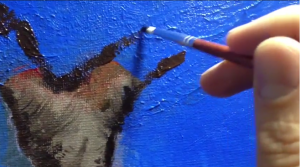 And I’m painting, and that slows me down, makes me focus on the details and the shadows and the necessity of multiple layers and growing and building and patience. So much patience. Fourteen years of patience, and perhaps decades more ahead.
And I’m painting, and that slows me down, makes me focus on the details and the shadows and the necessity of multiple layers and growing and building and patience. So much patience. Fourteen years of patience, and perhaps decades more ahead.
I’ve also been thinking of developing a new podcast to explore these things, but perhaps that’s too much too soon. But I’m thinking of a title along the lines of “The Well Fed Artist: Feeding Creativity While Having a Day Job.”
We’ll see if inspiration strikes.
A Dad’s Guide to Minecraft
Minecraft makes me feel stupid. If you don’t know what Minecraft is, stop right now and thank the Lord for His intervention in protecting you from this cult-breeding virtual LEGO set video game that bestows upon children the power to create whatever gargantuan constructs they can imagine out of 8-bit digital blocks.

That’s it.
No plot.
You can’t win the game.
You just build.
You can, however, play co-operatively with other players online or on a home network, you can play Minecraft death-match (which I really regret allowing in my house), or you could go full-introvert and dive into the single-player mode to create immersive and pixelated landscapes just so you can look at it and say, “Yep. There’s a pixelated landscape.”
And I honestly can’t get over the fact that this ground-breaking technology that has made the creator millions of dollars looks like the chunky blocky games I used to play on an Atari 2600 over thirty years ago. It’s retro, yet futuristic. It’s Minecraft.
I could have come up with this. But I didn’t. So someone else has made millions of dollars.
Whenever my kids lose twelve hours on a Saturday because they were creating a 500-story refrigerator filled with virtual pixelated bananas in Minecraft, I ask them how that will get them a job so they can move out in ten years. They think I’m kidding.
Last winter I had to temporarily leave my family behind in Atlanta when I got a new job in Denver. I was living in an extended stay hotel and made the regrettable promise to my oldest two Minecraft addicts (who also happen to be my sons) that I would get a Minecraft account so that we could play cooperatively and, in lieu of actual father/son bonding time, we could do so online through Minecraft.
This experience made Minecraft the first video game I’ve ever encountered in my entire life that made me utter the dreaded parental words, “I don’t get it.”
Those words then lead to a ridiculous rant where I might as well have hiked my pants up to my chest, popped on old-man glasses, and declared, “Why, when I was a kid we used to walk to the video arcade in the snow uphill both ways just so we could throw quarters away on games that had purpose – like Pac-man (where you ran around the exact same maze as many times as you could manage without dying) and Donkey Kong (where you navigated through just three repeated constructs as a gorilla threw barrels at you) and Mappy (my personal favorite which hardly anyone else remembers which was about a Police Mouse who avoided criminal cats by slamming doors and jumping on trampolines).”
See, THOSE games had a point! And years later I have a job. Because those games also cost 25-cents each so it was impossible to lose hours at a time playing them. Heck, we could hardly afford to play for more than ten minutes before we needed to go find some work to do to earn some more quarters.
“So what do I do?” I asked my sons via Skype last winter as we played together for the first time from a distance of over 1,400 miles.
“Come over here,” Sam (my oldest) instructed. I navigated my avatar (generically named Steve in the Minecraft world) to follow his character and together we chopped trees. And then we dug holes. And then we chopped trees. And then we dug holes. And apparently both the wood from the trees as well as the dirt from the ground formed some sort of currency that I’d use to “craft” together other minerals and objects. For example, three logs and a pound of dirt would create a pig. Or something like that.
And that’s pretty much Minecraft.
“So how did you do on your tests this week?” I asked my boys. They laughed. Dad is such a cut up.
Here are the other ways Minecraft makes me squirm:
- If other people in your home want to play, you need to buy another account for about $30. We’ve bought three of these accounts so far. Nearly $100. For digital LEGO playsets.
- If you want to play on mobile devices, you’ll pony up another $7.
- In addition to the games, my children also have Minecraft t-shirts, posters and toys. My wife and I paid for those, too.
- They’ve recently announced a new service called Minecraft Realms which (if I understand correctly from my children (because I’m not going to go research this)) allows you to have your own personal server hosted on Minecraft’s end. And this will have a monthly charge. Probably per user. I’ve asked my employer about having my 401K transferred to Mojang, the company who makes Minecraft.
- When our children aren’t playing Minecraft, they’re watching videos online of other people playing Minecraft. Because playing the game isn’t enough of a time-suck.
So those are the primary negatives for me. But as much as it pains me to admit it, there are some pros to the game, as well. For example:
- My kids have made some ridiculously awesome constructs. The Minecraft screenshots in this post are all buildings and arenas my kids made, block by stinkin’ block. My kids. I know, right?
- The program encourages a combination of artistry and engineering. Of course, kids can defy all logic and place a random block 45 feet in the air that could hold the entire Empire State Building, but still, the basics of engineering still exist.
- It teaches math, geometry, and physics without it seeming like its teaching math, geometry, and physics.
- Co-op mode genuinely fosters cooperation. My boys work better when they’re playing Minecraft than if they were left on their own to forage for food.
- Minecraft actually has multiple elements that would be good in the classroom, and websites like this one and this one have tons of articles, resources, and videos as to how to make Minecraft an even more educationally beneficial tool. If we were still a homeschooling family, I imagine Minecraft would be a big part of the curriculum.
The single biggest reason my wife and I have allowed it in our house is that the output of Minecraft has been some of the most creative that we’ve seen from our children. Though they spend hours creating things in a digital world that only they and a select few others can enjoy, they’re found a medium for creating. When I was their age, I did that with reams of paper and box loads of pencils. Tools change, and I can’t completely begrudge that fact.
And on a more personal level, when we finally managed to move the entire family across the country to join me in Denver, Minecraft not only allowed our boys to remain connected to their friends back east (as it continues to do so almost a year later), but helped them foster strong friendships here, as well.
Though I wish my kids would exercise more, read more, pray more, do their chores more promptly, cooperate as well in real life as they do online, and engage in more of the things I did when I was their age, Minecraft has inspired my boys to build a 100-foot statue of me for Father’s Day, create technically complex infinity roller coasters, and learn how to catapult chickens long distances.
And perhaps these skills developed in an 8-bit world (particularly the chicken tossing one) will indeed help them get jobs creating buildings, designing cities, or leading communities in the future.
Probably not. But I’ll keep praying that it works out that way.
Work in Progress
After the leaf painting from last week, I started a new one. Here’s the very first foundation:
And here it is after the first coat on the hands:
I doubt this one will end up on the wall, either. Jennifer likes artwork that is somewhat nebulous, where you have to gaze at it a bit to figure it out. My Catholic readers can probably figure out where I’m going with this.
I’ll post updates as I progress.
This Could Have Gone On All Day
Stupid Leaves
The summer before Jennifer and I got married, I went on a mad-dash painting spree. I wanted our apartment to have cool artwork on it and did some rather cool paintings, if I do say so myself. I did two portraits of Ernest Hemingway (which I’m not even sure what happened to), one of Jennifer (which I think is in her closet), and a portrait of the two of us (which is now in basement), and a couple other random paintings. They were all done in oil on canvas, and it was the first time I’d done anything like that. But because of my long history of drawing, the process came fairly easy to me.
But then came children, and spending hours painting, plus having turpentine around to clean the brushes, didn’t seem like a good idea.
Now, after a 16-year sabbatical from painting, Jennifer got me a new set of brushes, an easel, a couple canvases, and a bunch of tubes of paint (this time in easier to clean acrylic).
Whereas I earnestly jumped into painting 19 years ago, now I was a bit trepidatious to start again. Even though I like the paintings I did before we got married, looking at them now I see all sorts of weaknesses and shortcuts.
But do I paint for fun or because I’m an expert at it? That’s the question I now ask. I’m no longer under some self-imposed deadline of creating a bunch of paintings to decorate the house. Instead, I highly suspect that most of what I create now will end up gathering dust in the basement. Instead, I’m trying to approach art as an exercise in letting the Holy Spirit work through me if He wants to, and otherwise just enjoying the process of creating if He doesn’t.
So far I’ve finished one painting and started a second. The first was on practice board (wish I’d used actual canvas now). The second is on a 24×30″ canvas.
The first painting was of a tree. I thought I was finished when I got to this point:
While I really liked the way the trunk turned out, I really, really, really, really, really didn’t like the leaves.
After a few days and much thought, I did this to the tree:

As you can imagine, I was a wee bit nervous when I painted over such a large part of the tree. What I did different the second time around was to actually paint the branches on the top, even though I knew I’d end up painting over those. In the end, this was the final result:
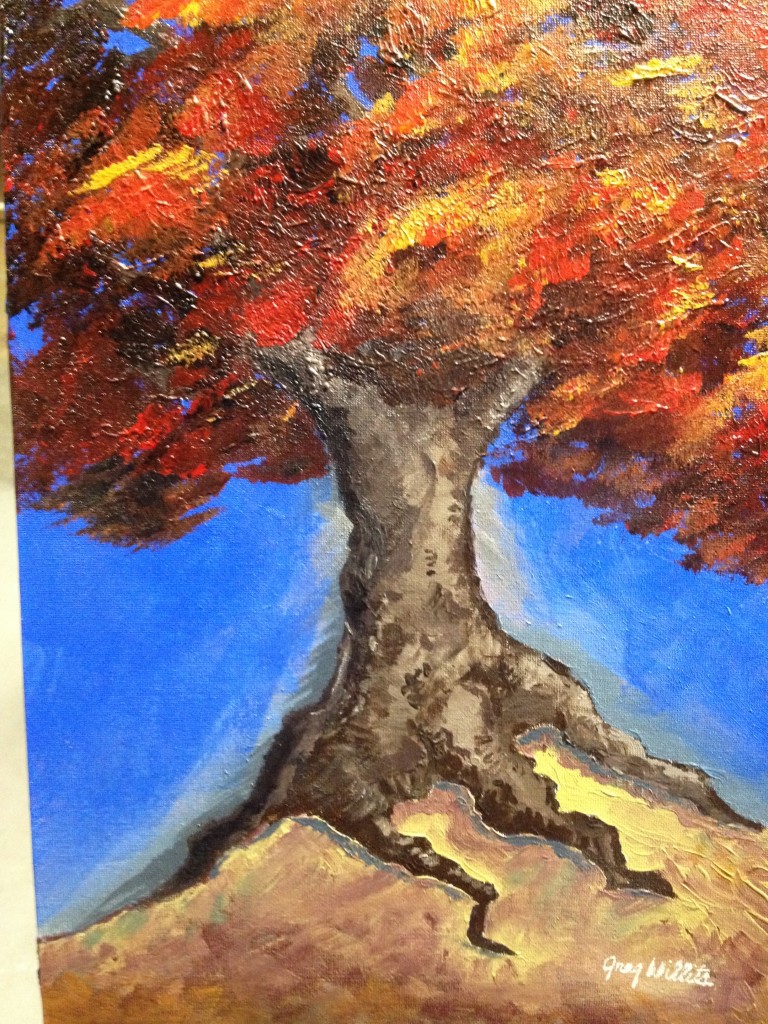
I was much happier with the final product. But I’m still intimidated by painting those stupid leaves.
Here are the two versions side by side (I also ended up expanding the trunk a bit since the mass of the leaves ended up being greater):
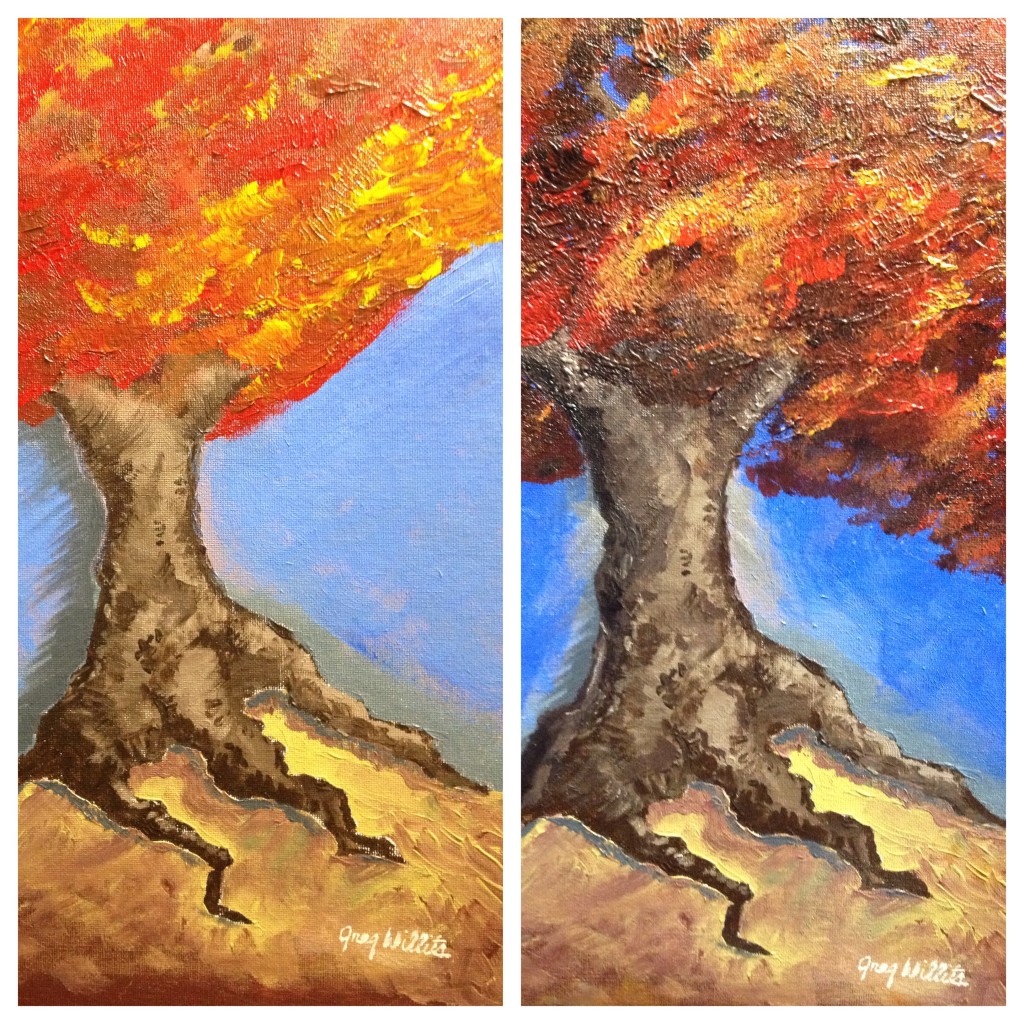 As I made the corrections, I decided to make a short video of the process:
As I made the corrections, I decided to make a short video of the process:
The New Evangelization and You: Be Not Afraid NOW AVAILABLE!
 My brand new book, “The New Evangelization and You: Be Not Afraid” is now available in paperback and eBook formats, as well as in audio formats on CD and downloadable MP3.
My brand new book, “The New Evangelization and You: Be Not Afraid” is now available in paperback and eBook formats, as well as in audio formats on CD and downloadable MP3.
Here’s what people are saying about it:
“A Refreshing and Exciting Book to Fire you up in the Faith”
“Required reading for Catholics”
“Very Approachable Exposition of the New Evangelization”
“A New Evangelization Primer That Will Motivate You”
Read more reviews on Amazon and pick up a copy today.
